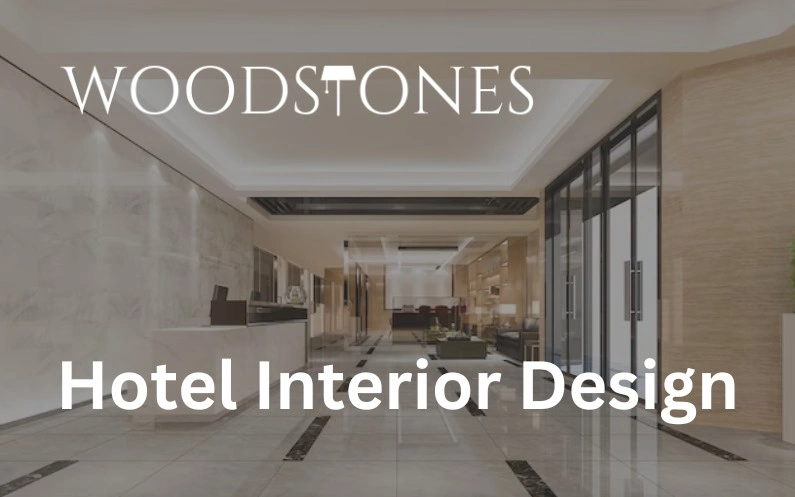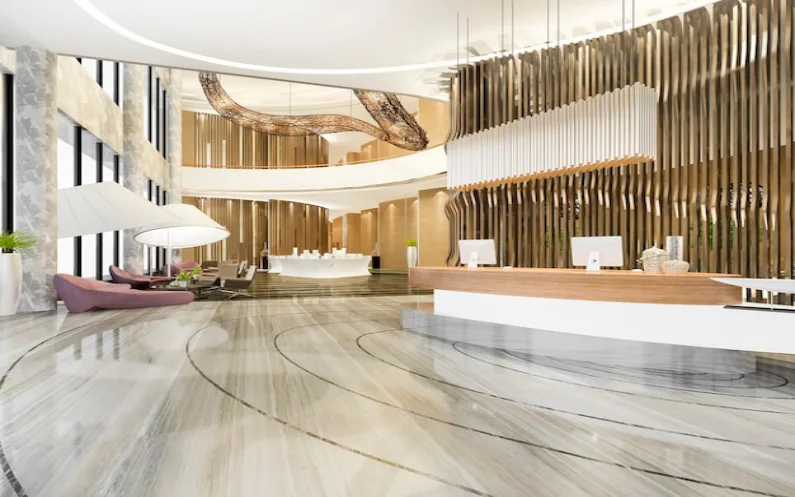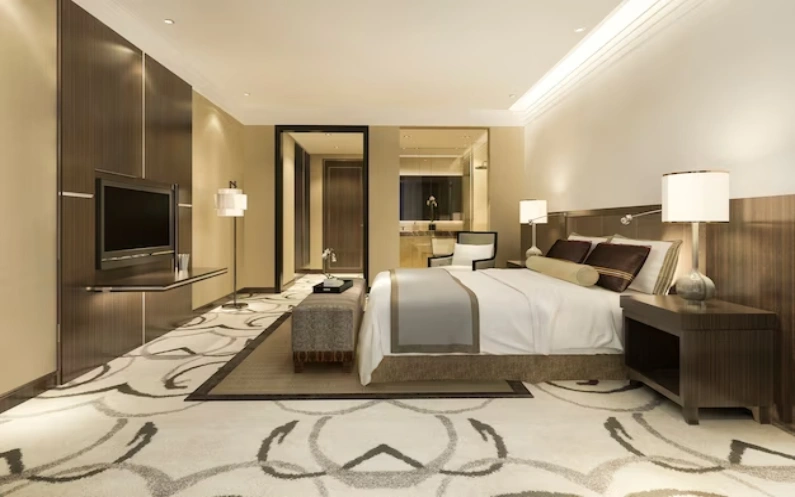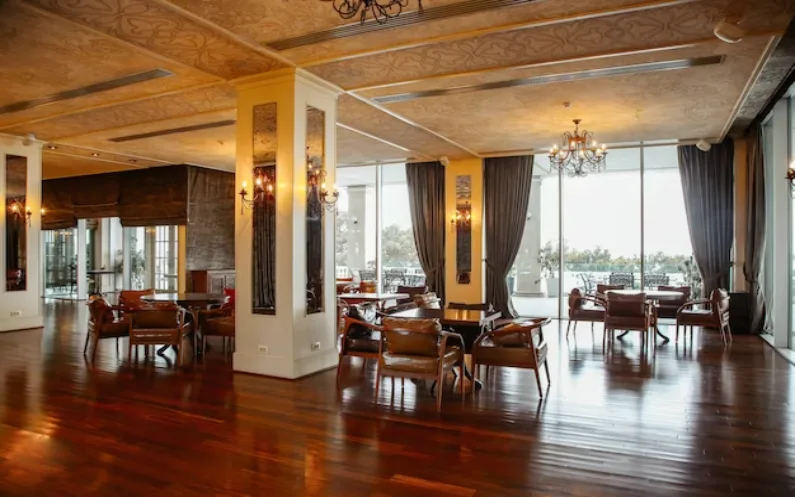1. Conceptualizing Elegance
Begin by defining the overarching concept of the hotel’s luxury aesthetic. Whether it’s modern minimalism, classic grandeur, or a fusion of styles, the concept should reflect the hotel’s identity and resonate with the target audience.
2. Architectural Harmony
Luxury hotels often start with architectural brilliance. Collaborate with architects to ensure that the building’s design seamlessly integrates with the interior concept, creating a cohesive and visually pleasing ambiance.
3. Material Selection
Choose materials that exude quality and timelessness. Incorporate lavish textures like marble, polished metals, rich woods, and luxurious fabrics. The tactful use of these materials elevates the sensory experience.
4. Thoughtful Layout
Efficient space planning is crucial. Guest rooms should offer ample space while maintaining an intimate feel. Public areas like lobbies and lounges should encourage interaction while providing cozy corners for privacy.
5. Lighting Magic
Lighting sets the mood. Implement a combination of ambient, task, and accent lighting to create different atmospheres. Chandeliers, sconces, and innovative fixtures can be statement pieces while enhancing the luxurious feel.
6. Furnishing Finesse
Invest in bespoke and high-quality furnishings that align with the design concept. Furniture should be not only visually striking but also ergonomic and comfortable for guests.
7. Art and Artistry
Curate art that complements the design theme. Thoughtfully chosen artwork adds layers of sophistication and cultural depth to the space.
8. Personalized Touches
Offer guests personalized experiences by incorporating custom-made elements. Tailored services and unique room features create a sense of exclusivity.
9. Seamless Technology Integration
Modern luxury seamlessly blends technology into the design. Integrate smart controls, entertainment systems, and other technological conveniences that enhance the guest experience.
10. Sustainability in Style
Incorporate sustainable practices and materials without compromising on luxury. Eco-friendly design choices resonate with the environmentally conscious traveler.
11. Spa and Wellness Retreats
Integrate spa and wellness areas that provide a haven of relaxation. A serene environment with premium amenities elevates the luxury experience.
12. Gastronomic Excellence
High-end dining spaces should reflect the culinary experience. Design restaurants that stimulate the senses, enhancing the overall perception of luxury.
13. Exteriors and Landscaping
Luxury extends beyond interiors. Create inviting outdoor spaces and lush landscaping that evoke a sense of tranquility and grandeur.
14. Creating Memories
Craft spaces that encourage memorable experiences. Be it breathtaking views, cozy fireplaces, or elegant lounges, these moments contribute to the allure of luxury.
15. Quality Control
Throughout the design and construction process, maintain meticulous attention to detail. Quality control ensures the execution aligns with the design vision.



